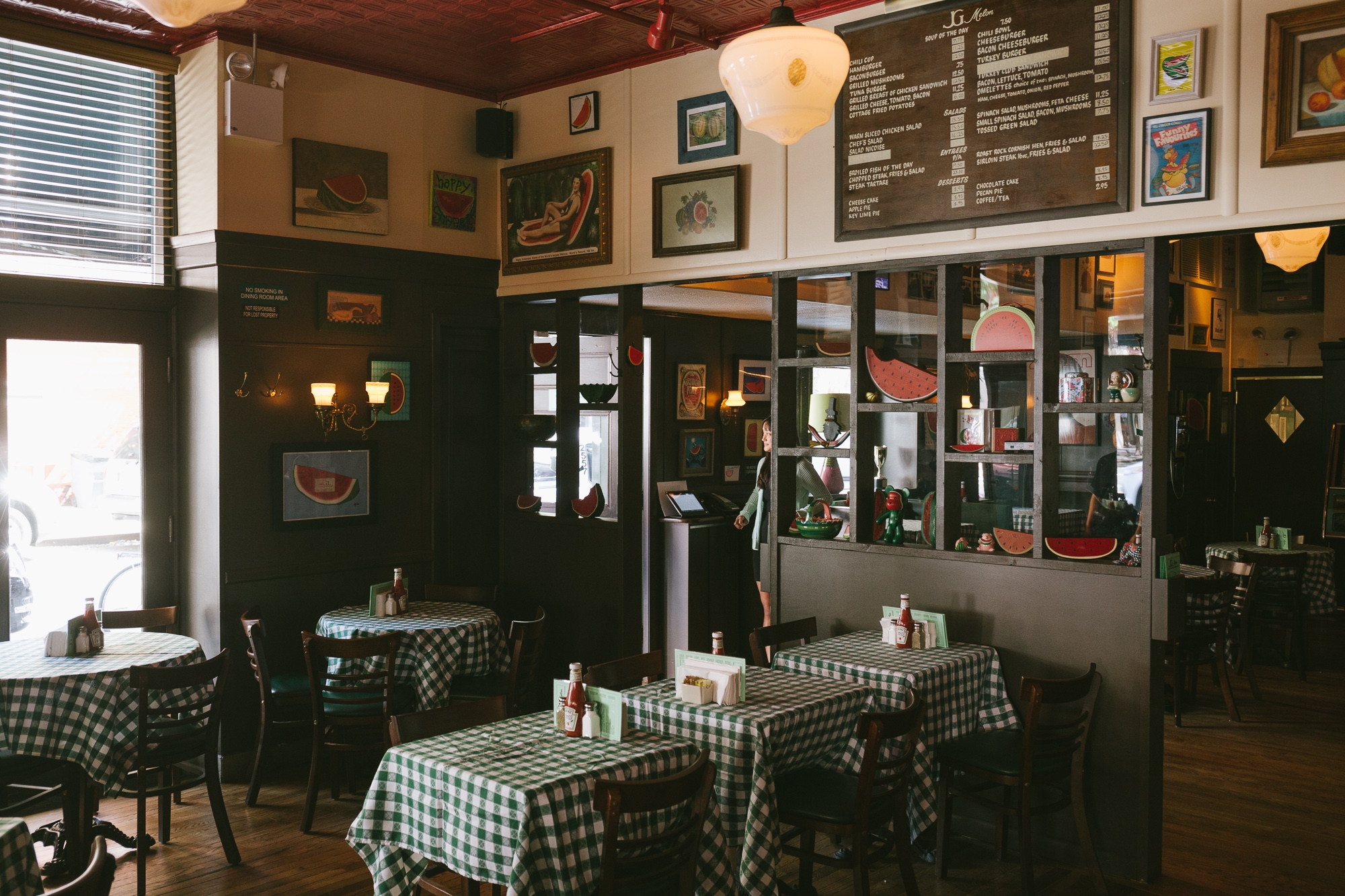There’s no way I was the only person at the matinee screening of My Dinner with Andre (1981) at New York’s Metrograph theatre who felt déjà vu watching a film consisting almost entirely of a meal shared between two old friends: someone else must have wandered in from the brunch queue that winds its way through the Lower East Side. The feeling was exaggerated by having committed a portion of my life earlier that week to a webisode of Try Everything on the Menu at… on Bon Appetit magazine’s YouTube channel. Having admonished myself then for watching two people eat brunch, I now found myself watching two people eat dinner.
In Louis Malle’s film, the actor and playwright Wallace Shawn and theatre director Andre Gregory play loose versions of themselves sitting down to eat in the dimly lit French restaurant which provides the backdrop to their middle-aged alienation. But Shawn’s inner monologue – “The life of a playwright is tough…” he says, while walking the streets of Tribeca and SoHo at the film’s beginning – comes off as romantic compared to the inattentive scrolling I do on my phone while riding the subway today. In 2019, Shawn’s existential afternoons have evolved into the freelance economy, in which the battle against the total subsumption of life into labour is waged with 30-minute increments of mindlessness. I’d rather not call these brackets leisure time, but that’s what shows like Trying Everything on the Menu at… NYC’s Most Famous Burger Restaurant are competing for. Part of the programme’s appeal is the game show-like format of two editors sitting down to a meal and passing judgment on it. But my attention is drawn to the outlandish excess of what one editor calls “church”. The order that attracted him for the service includes a cheeseburger, cottage fries and an entire bowl of beef chilli.
The Lower East Side today is a far cry from the dirty streets depicted in the film. I live in the neighbourhood and it can feel like a theme park: on weekends, the bridge-and-tunnel crowd visit Jewish delis such as Russ & Daughters and Katz’s, or any one of the restaurants within the Little Italy simulacrum, to dine out on food with an authentic backstory. Proof that these people are convinced of the beauty of their prison is the fact that they spend exorbitantly on smoked fish and enormous portions of mediocre Italian food when, in reality, pretty much everything south of Delancey Street is a vibrant Chinatown. The Jewish and Italian populations all left decades ago.
‘Someone asked me the other day if I could name a movie that was entirely devoid of clichés,’ wrote film critic Roger Ebert in 1999. ‘I thought for a moment, and then answered, My Dinner with Andre… I am impressed once more by how wonderfully odd this movie is, how there is nothing else like it. It should be unwatchable, and yet those who love it return time and again, enchanted.’ The same distinction could be applied to those Bon Appetit videos, though the hosts’ weapon is hyperbole rather than originality or eccentricity. “I’m obsessed with this,” one says about a sandwich, while the other states of a certain cured meat that “this is everything, ev-er-y-thing”.
There are some other similarities. Characters in both order an Amaro at the end of their dinners (in the web series’ first episode, to be precise) in order to prolong an experience they are savouring. In the film this is at the expense of the restaurant staff, who want to go home, in the series it is done in the awareness that they are taking up valuable tablespace during the lunch rush. And there is also the question of the souvenir: among the items ordered during various episodes of Try Everything on the Menu at… are silk neckties patterned with melon slices, while one Jewish deli specialises in hats. Shawn’s journey back downtown sheds some light on why these mementoes of a dining experience are so popular. “I treated myself to a taxi,” he says, as he observes the streets of New York slip past in a kaleidoscope of reflections. “There wasn’t a street, there wasn’t a building, that wasn’t connected to some memory in my mind.” By the time he arrives home, there is a sense of elation, which the film complements with Erik Satie’s Gymnopédie No. 1 (1888), each note sustained until it is as light as air. Shawn is reunited with his beloved girlfriend, Debbie, to whom he cannot wait to describe the night’s conversation.
Part of his eagerness, I’m sure, can be attributed to a fear of forgetting. Of course, the edges will soften, the details will scatter. I remembered, while writing this, that I had worn my own commemorative cap from a visit to another uptown Jewish deli to the movie. Its navy-blue has already begun to fade. Life, as Gregory observes, is confined to habit, but what these films and videos distil from food is the value, and the joy, in being able to linger. Which reminds me, sadly, that I need to get back to work.
Online exclusive published on 30 October 2019
